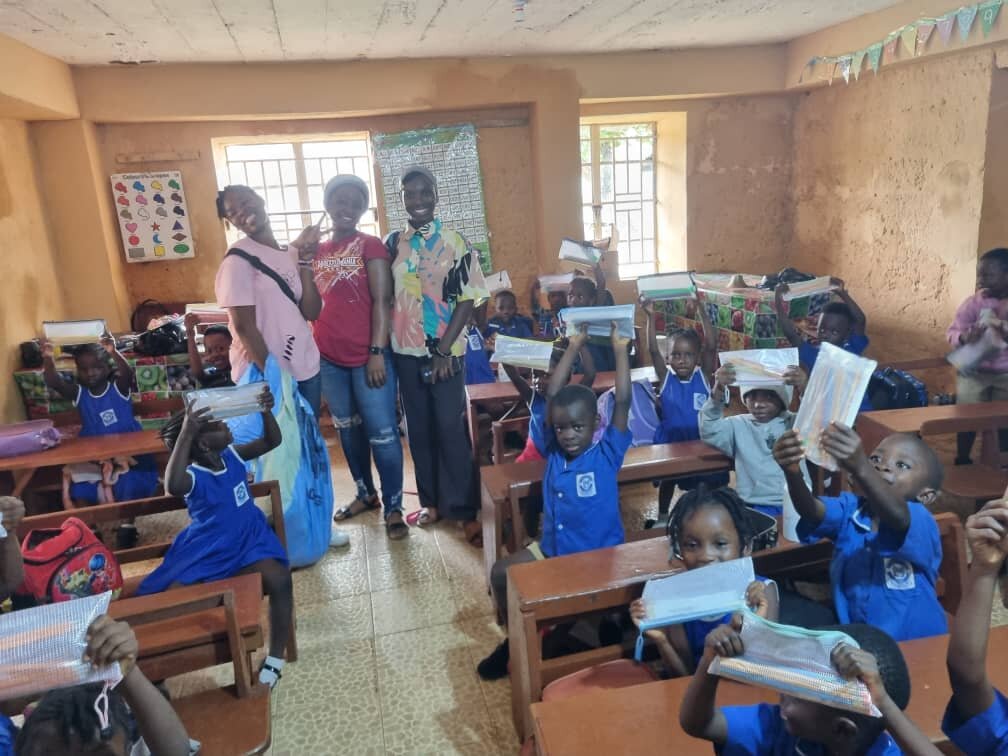By Amy Baty-Herbert | Project Leader
Mariama, a Year of the Pencil volunteer, shared her moving experience from the distribution—and her words remind us just how much your support truly means.
Mariama described the day as “a memorable experience,” one she will cherish for years. As she helped distribute pencils to hundreds of students, she watched wide smiles appear instantly—smiles filled with joy, relief, and pure excitement. Some girls held their pencils like treasures, amazed that something so small could be theirs to keep.
For many students in Sierra Leone, basic school supplies are not guaranteed. But on this special day, because of donors like you, everything changed.
Mariama saw firsthand how a simple pencil transformed the atmosphere. She reflected on the moment, saying:
“It was humbling. I realized how small acts of kindness can light up a child’s world. For many of these girls, this wasn’t just a pencil—it was hope, belonging, and a reminder that their education matters.”
Your generosity didn’t just place pencils in girls’ hands—you placed opportunity, dignity, and encouragement into their lives.
As we move toward 2026, your continued support will help ensure that more girls have the tools they need to learn, grow, and chase their dreams.
Thank you for standing with girls across Sierra Leone. Thank you for lighting up classrooms, building confidence, and opening doors—one pencil, one gift, one girl at a time.
With gratitude,
Amy & the Develop Africa Team
GlobalGiving@developafrica.org
Links:
By Amy Baty-Herbert | Project Leader
By Amy Baty-Herbert | Project Leader
Project reports on GlobalGiving are posted directly to globalgiving.org by Project Leaders as they are completed, generally every 3-4 months. To protect the integrity of these documents, GlobalGiving does not alter them; therefore you may find some language or formatting issues.
If you donate to this project or have donated to this project, you can receive an email when this project posts a report. You can also subscribe for reports without donating.
Support this important cause by creating a personalized fundraising page.
Start a Fundraiser
